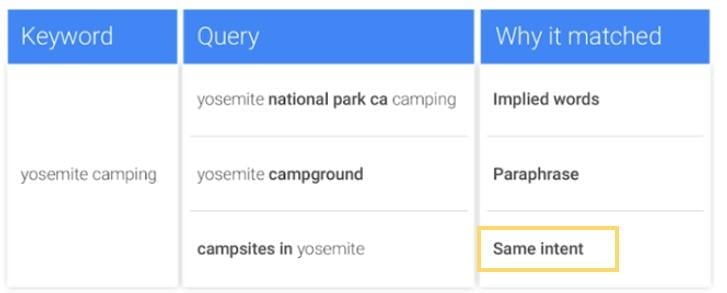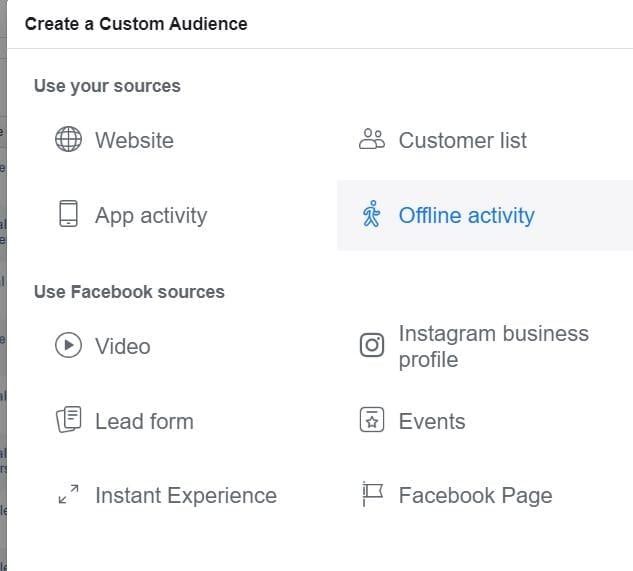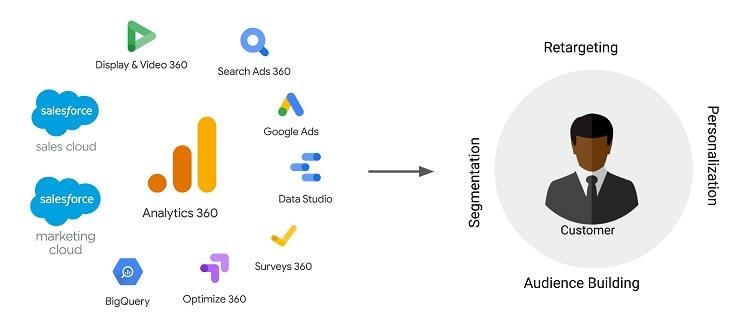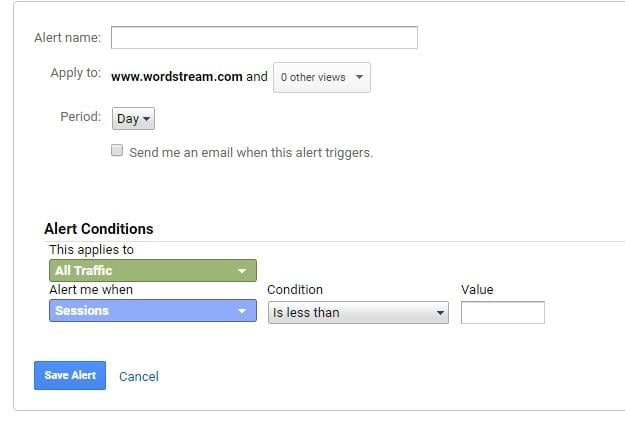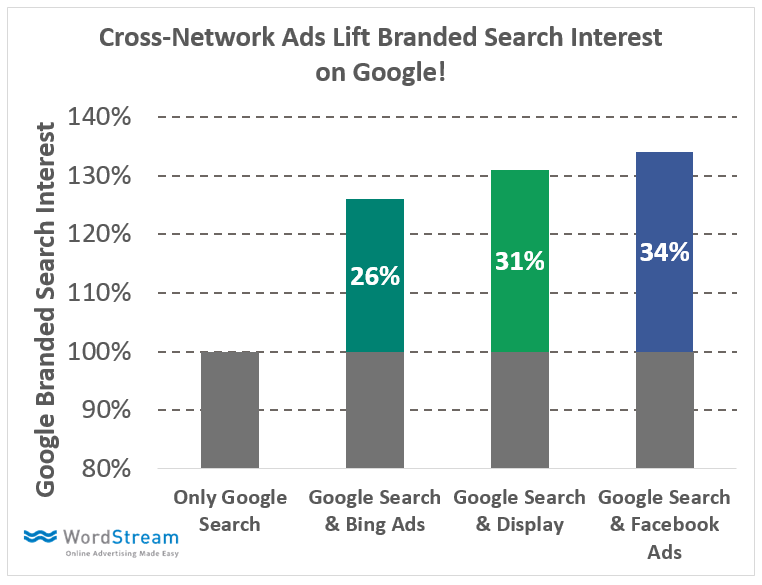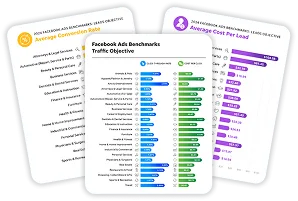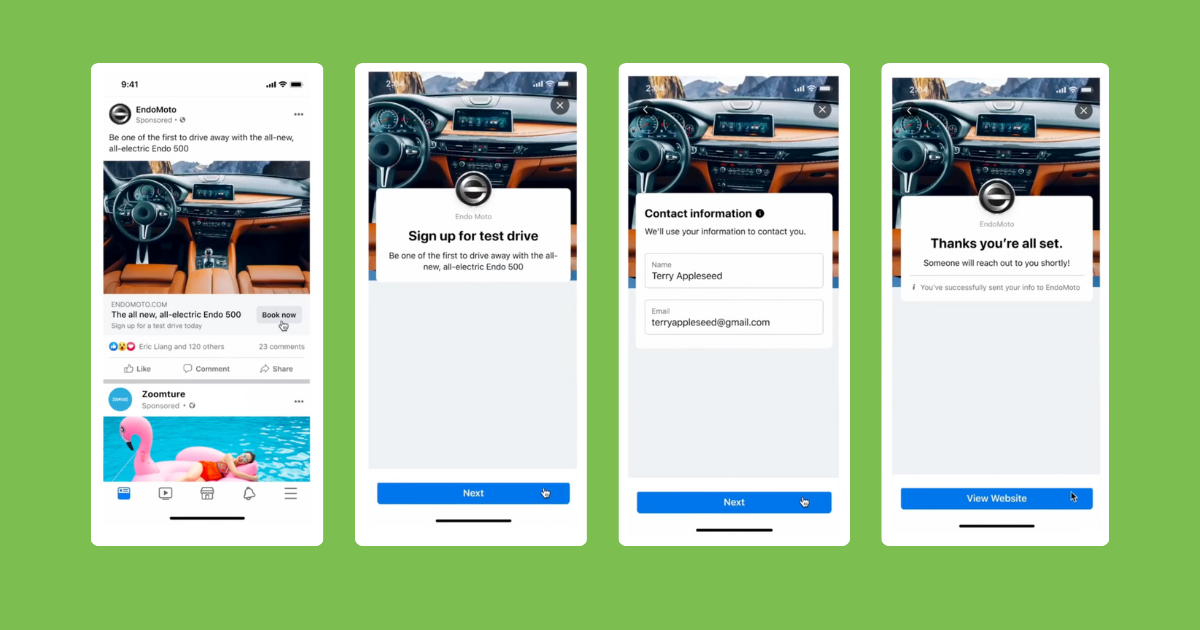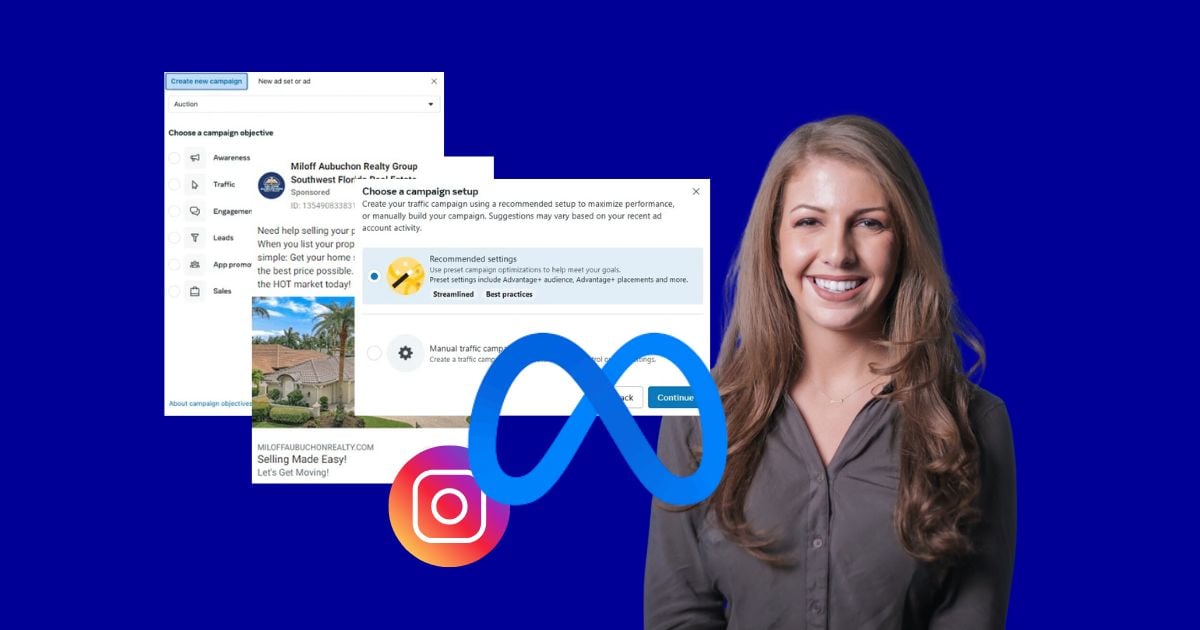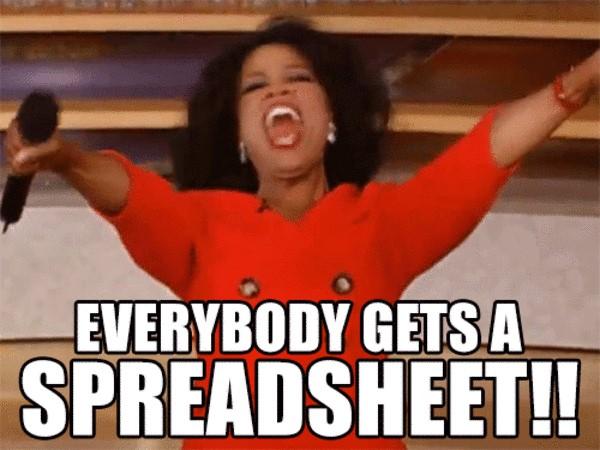
Looking back at my time at WordStream, I’ve learned A TON. Most noteworthy, I’ve furthered my paid search and social advertising expertise, backed by over $10 million in ad spend managed. Yup, over $10 million—that means I’ve reviewed a LOT of performance data.
How I feel as an acquisition marketer and our resident data fanatic.
And here at WordStream, we aren’t just spending online to spend; we have aggressive goals to generate quality leads and new business for the company. With aggressive goals come significant account activity—constant analysis, optimization, testing, and strategizing.
So, in today’s blog post, I’m going to share my top lessons learned spending over $10 million, which estimates to over 90M impressions and 4M clicks captured. That’s a lot of reach. Here are the five most important lessons I’ve learned:
- Intent, intent, intent
- Master the algorithm
- Optimize for quality
- Tracking and alerts are crucial
- Make your channels work together
Let’s get started.
1. Intent, intent, intent
Intent marketing is any kind of marketing that aims to meet an end user or prospect’s intent—that is, what they really want or need in that moment. Most of the time when we talk about executing on “intent marketing,” we’re referring to using a known audience parameter, such as a search query, remarketing list, or a prospecting audience.
Driving your advertising strategy based on intent is a concept that should never retire. But, over time, with changes in the industry, it’s become even harder to nail down a prospect’s intent solely by the parameters I listed above.
Applied example: Here you can clearly define the intent on the left, but how do we know what someone is looking for on the right?
For example, just in August, Google released changes to broad match modifier. This update meant that advertisers would now start to match new close variants to their BMM (broad match modifier) keywords. This makes it tricky to be confident in the intent that your targeted keyword will trigger, as Google has more freedom to determine which queries are relevant to your keywords.
My biggest lesson here? That you have to trust and work together with the algorithms to capture the intent you’re looking for. Here are a few recommendations to accomplish this:
For paid search:
- Leverage long-tail keywords where you can clearly define the intent behind the query.
- Maintain a strong account structure built on intent.
- Use automated bidding for broad keywords where you can’t see the intent behind the query.
- Add observed audiences to tell how valuable particular audiences pair with your keywords, and be sure to use remarketing lists for search ads, or RSLAs, in these audiences.
For paid social:
- Leverage custom audiences—particularly website visitors and Facebook sourced engagement audiences.
- Build lookalike audiences off of lists with high intent signals—adjust your lookalike size based on the level of intent you are looking to capture (1% for the highest intent, 10% for the broadest match of intent).
- Select the right objectives & campaign settings so the algorithm optimizes for your intent goals.
2. Master the algorithms
Both the Google and Facebook ad auctions are run by an algorithm. And while there is training and documentation that explains the best practices for the auction, neither of the platforms releases the secrets of how the algorithm runs and makes decisions. With uncertainty about how the algorithm is delivering your account comes confusion about what you should be doing in your account.
It’s taken time, but after managing over $10 M in ad spend, I’ve come to figure it out (as close as one can I guess). And now that we’ve unlocked our keys on how to master the algorithm, this lesson has become the backbone to success for how we manage our accounts.
So how can my lesson be applied to your account?
For paid search:
- Don’t be afraid of automated bidding.
- Avoid significant changes that put you in the learning period (which impacts your delivery and takes time for the algorithm to get back up to it’s efficiencies). That means don’t make greater than a 20% change to any campaign’s budget, limit bulk actions in campaigns with automated bidding all at once, and be methodical about when / how you make updates to your conversion actions.
For paid social:
- Give the algorithm the freedom it needs to reach peak delivery by enabling automatic placements and trying to use campaign budget optimization (CBO).
- Be deliberate with your optimization event decisions.
- Provide a significant volume of your selected optimization events so the algorithm has enough data to learn. Facebook requires 50 optimization events in a 7-day period to exit the learning phase.
- Don’t “define” your audience too much.
Just like I said in the first point, you need to “trust and work together with the algorithms” to enable your advertising success.
3. Optimize for quality
For most lead gen advertisers, the goal isn’t to just drive reach or conversions, it’s typically about driving quantity and quality leads for your business—which is the same for our accounts here at WordStream.
Before working in an in-house role, I was client-facing at a marketing agency. So, if my clients didn’t provide reports or feedback on what was happening after the “conversion,” I was blind to optimizing their account for quality.
Right off the bat when I started in this in-house role at WordStream, I onboarded to how we track custom parameters from the ad platforms into our CRM. Immediately, I was able to take my traditional account optimization to the next level by gaining insight into what campaigns and offers were driving not only qualified leads but also demos and eventually new customers.
However, we soon realized that while we were gaining these insights and using them to make decisions, the process was flawed in two ways:
- It was a lot of manual work—which takes time.
- The algorithms can’t see these reports and learnings we were gathering.
So what did we do? We set up an integration that connects our CRM data with our Google Analytics account.
Now, not only have we brought new signals to the algorithms, but we’ve gathered more data to build audiences and optimize our account management.
While this lesson requires sophisticated tracking to follow, there are still plenty of actions you can take in your account to be successful in optimizing for quality:
For paid search:
- Stay on top of your search terms report and flag poor quality queries as negative keywords.
- Set up your conversion tracking as far down the funnel as possible.
For paid social:
- Create block lists to control which placements and sites you don’t want your ads to show.
- Set up your conversion tracking as far down the funnel as possible, just as you would in Google Ads.
- Review your comments and reactions to understand the sentiment of your ad viewers.
Overall, furthering your ability to drive quality leads from your paid advertising will drive a better return on your ad spend—and serve as proof to why you should scale your budgets.
4. Tracking & alerts are crucial
With over $10M in ad spend, comes a lot of information to track—at times, it can be impossible to stay on top of it all manually.
And I’m not afraid to admit, we’ve had our fair share of mistakes and tracking outages. But we’ve made each of these mistakes into a lesson learned, so we can come out more prepared for the future. Here a few examples of systems we’ve put in place:
- Creating custom alerts for new trends or patterns in Google Analytics.
- Building automated rules in Google Ads to trigger emails when particular conditions occur.
- Generate automatic reports and dashboards that keep your key metrics visible at all times. (Pro tip: WordStream offers personalized, simple-to-use cross platform success reports.)
- Defining a cadence and accountability to review reports to discuss and highlight noteworthy, new trends.
5. Make your channels work together
Now, I’ve talked a lot about how to make your channels work smarter, but what I haven’t talked about yet is how to make your paid channels work together.
Here at WordStream, Google & Facebook Ads are at the core of our paid channel stack. We’ve found that not only do these channels help balance out our spend towards both quantity and quality, but that we constantly leverage insights from one to bring into the other.
So why is a cross-channel strategy important? Lots of reasons! But to name just a few:
- Helps push your prospects down the marketing funnel by reach them across the internet.
- Drives consistency for your prospects at each touch.
- Maximizes your return on ad spend.
Just like there are countless benefits of a cross-channel strategy, there are a ton of ways that you can get started to make your Facebook & Google Ads work better together.
For paid search:
- Use RLSA (remarketing lists for search ads) audiences to target new keywords and/or control your bidding
- Customize your ad based on their previous interaction. (Pro tip: Try targeting an RLSA audience of users who interacted with a Facebook ad and personalize your ad message on search.)
For paid social:
- Use custom audiences to re-engage known prospects and trigger a personalized ad based on their previous interactions.
- Reach new audiences that inspire branded searches for Google Ads—which is shown to increase branded search interest by 34% than Google Search alone.
- Lastly, outside of the platforms, be sure to take a look at the attribution reporting to see how often your paid search and social ads are assisting each other to the conversion.
My top Google & Facebook Ads lessons
I know I just went through a lot of concepts and share a lot of examples, so let me summarize. The top lessons that I have learned from managing over $10M in ad spend across Google & Facebook Ads are:
- Intent, intent, intent
- Master the algorithm
- Optimize for quality
- Tracking and alerts are crucial
- Make your channels work together


